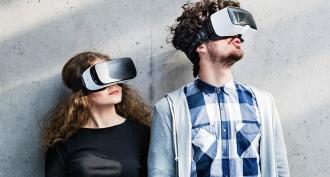
Photo Courtesy of EdTech Magazine
"Augmented and virtual reality have become common tools in higher education, offering educators ways to expand the walls of their classrooms.
An EDUCAUSE report from earlier this year found that students with access to emerging technology flourish on campus, inviting administrators to invest in tools like AR and VR.
From trips to the surface of the moon to a safe environment for experimenting with dangerous chemicals, AR and VR offer a number of educational possibilities. Experts believe the true potential of these emerging technologies is just beginning to reveal itself.
Some colleges are already exploring VR’s potential, investing in new research and degree programs to delve into the virtual world and allocating resources to allow students to be innovators in the virtual space.
Mixed Reality Access Opens New Doors for Research
Institutions that are bringing “mixed reality” (or XR) experiences to campus — combining AR, VR and 3D printing — are witnessing breakthroughs that translate from the virtual world to the real one.
At the University of Michigan, for example, students are using AR to design safe autonomous vehicles for future smart cities.
The test track, called MCity, uses AR tools to project traffic simulations to test the car’s interaction with other elements found on the road, such as pedestrians, stop lights or other cars.
The track was built in partnership with technology companies Verizon, LG and Intel to offer researchers and students a state-of-the-art facility."
Read more about how VR improves research at EdTech
